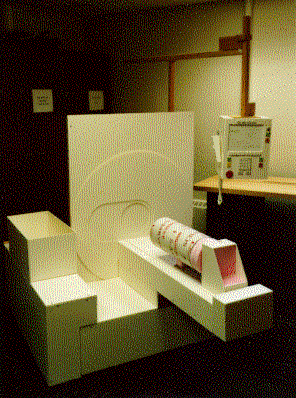
Department of Industrial and Manufacturing Engineering, Oregon State University
12 December 1996
Key words: human factors engineering, ergonomics, system development, silicon wafers, silicon ingots, wafer slicing saw, wafer slicing machine silicon wafer production.
A wafer slicing saw is a machine used to slice silicon ingots into silicon wafers. It is key to an important step in the production of silicon wafers that go on to be used as raw material in the manufacture of integrated circuits. The Toyo T-SM-200A is an example of a wafer slicing saw. It is of relatively recent design, offers high levels of automation, and it is widely used in the industry.
Like any piece of manufacturing equipment, a wafer slicing saw should be designed with the characteristics, capabilities, and limitations of its human operator in mind. Only when this is done can the highest levels of system performance and safety be realized in operation.
Such a human-centered design process is the motivation for IE 442/542 and IE 443/543, human factors engineering courses offered by the Department of Industrial and Manufacturing Engineering at Oregon State University. In these courses, the students and instructors work together as a team to design or redesign a system in such a was that the operators, users, and maintainers are given adequate consideration in the design process. The project described in this document was undertaken winter and spring terms, 1996.
A more detailed description of this process may be found in The Human-Machine System Development Process.
Throughout the development process, the team communicated via e-mail and regularly posted preliminary analysis and design results on an intranet.
 |